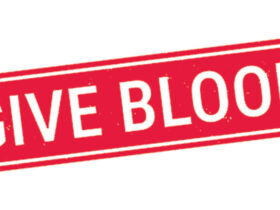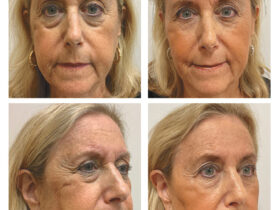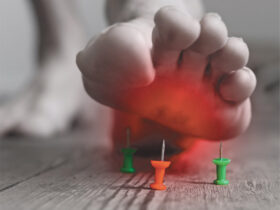By Russell Becker, DO, Vascular Surgeon
The restriction of blood flow damages nerve areas and reduces sensation. Many times, PAD results in arterial ulcers due to a lack of blood flow to the tissue via damaged arteries. Venous reflux can damage veins due to an insufficient amount of blood returning back to the heart and depriving the legs of adequate blood flow. As a result, wounds can develop on the legs as well. With both conditions, when you develop an ulcer, the lack of blood flow makes it difficult for the wound to heal.
In the endothelial layer of the dermis, vascularization must take place in order to heal the wound. The neovascularization or also known as angiogenesis is when new microvessels, fibroblast, and collagen begin to proliferate and form along with an increase in oxygen uptake and micronutrients to help grow new tissue, and to build a strong vascular blood flow to supply the proper nutrients to the dermal layers.1
Leg Ulcer Treatment
Treating the nonhealing or challenging wounds is critical, and the sooner the treatment is started, the faster the healing will begin with optimal outcomes. Vascular Surgeon, Dr. Becker works directly with his team of fellow specialists to treat the wounds, and additionally, his priority is to treat his patient’s PAD or venous issues with a multifactorial approach. These range from conservative to interventional.
Treating PAD and Venous Reflux
Although these two conditions are treated differently, they are often comorbidities due to related disorders and underlying conditions.
Treatment Options for PAD
Diet and Exercise
Medications
Peripheral Vascular Stent
Angioplasty
Bypass Grafting
Worst-Case May Require Amputation
Venous Treatment
Diet and Exercise
Lifestyle Changes
pelvic vein embolization (PVE)
VenaSeal
Treating Underlying Causes
Because lower extremity venous insufficiency is often a comorbidity, once the primary damaged veins are treated, the lower venous issues typically subside as well.
PAD
Individuals with Peripheral Arterial Disease (PAD) have blood flow disruptions usually in the feet and legs, but it can also occur in the brain, arms, and heart. When the blood vessels are narrowed or damaged, the blood flow becomes obstructed, and other complications can coincide. PAD can lead to severe medical conditions. Currently, 8.5 million Americans have peripheral artery disease.
Individuals with arterial disease due to atherosclerosis (plaque buildup in the arteries) often have peripheral vascular disease (PVD). This causes other blood vessel conditions like DVT’s (Deep Vein Thrombosis) varicose veins, pulmonary embolisms, and venous insufficiency are interrelated.
Venous Reflux
Various forms of venous issues affect 25 million Americans. When our veins are working correctly, they pump blood back to the heart. Valves in the veins are made to open and close in one direction if these valves or the wall of the veins are damaged, the blood is unable to work against gravity, and the result is a pooling of the blood in our legs. This pooling is called stasis and can present significant risks to our health. Stasis is the primary cause of venous reflux.
Sometimes venous reflux is more of a cosmetic issue and poses little health concern. This is usually noted in spider veins, which is when the tiny capillaries are damaged, but when the veins are damaged, this can cause varicose veins, which can lead to much more severe health issues. Neither of these should be taken lightly. A medical professional will be able to report whether or not your symptoms are superficial, or dangerous and in need treatment. If a person has chronic venous reflux, their heart will not receive the appropriate amount of blood due to the insufficient blood pumping from the legs.
Because the veins and arteries balance each other out, it’s critical to see a physician when an individual is experiencing chronic symptoms. If the veins are damaged, it’s not unusual that the arteries are not pumping blood efficiently either. PAD must be treated to prevent further damage to your circulatory system and your overall health. If you or someone you know is experiencing any venous or arterial issues, please contact your physician immediately.
Russell Becker, DO, Vascular Surgeon
Dr. Becker received his fellowship training in vascular and endovascular surgery at Wayne State University in Detroit. He is board-certified by the American Osteopathic Board of Surgery, he’s a fellow of the American College of Osteopathic Surgeons, and he retains active memberships with the Society for Vascular Surgery and the American Association for Vascular Surgery.
Dr. Becker has experience and interest in all areas of vascular and endovascular surgery, including treatment of conditions like carotid artery disease, hemodialysis access creation and maintenance, and diseases of the veins.
Beyond performing surgery, Dr. Becker is a well published author of vascular surgery literature. He has previously served as an investigator in numerous new and developing clinical device trials and has been a part of the clinical faculty in vascular surgery at Michigan State University College of Human Medicine in East Lansing, Michigan.
WE’VE MOVED—OUR NEW LOCATION IS:
1875 Veterans Park Drive, Suite 2203
Naples, FL 34109
239-431-5884
www.vascularcenternaples.com
Sources:
1. https://www.nhlbi.nih.gov/health-topics/peripheral-artery-disease
2. https://vascular.org/patient-resources/vascular-treatments/amputation
References:
1. LeBlanc A., Microvascular Repair: Post-Angiogenesis Vascular Dynamics, Microcirculation. 2012 Nov; 19(8): 10.1111/j.1549-8719.2012.00207.x. doi: 10.1111/j.1549-8719.2012.00207.x










